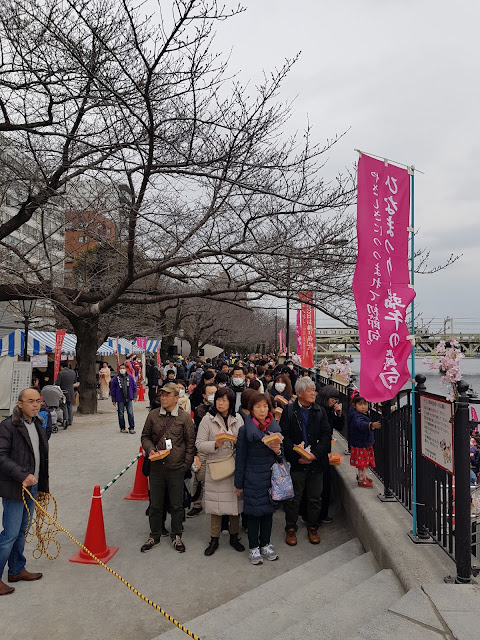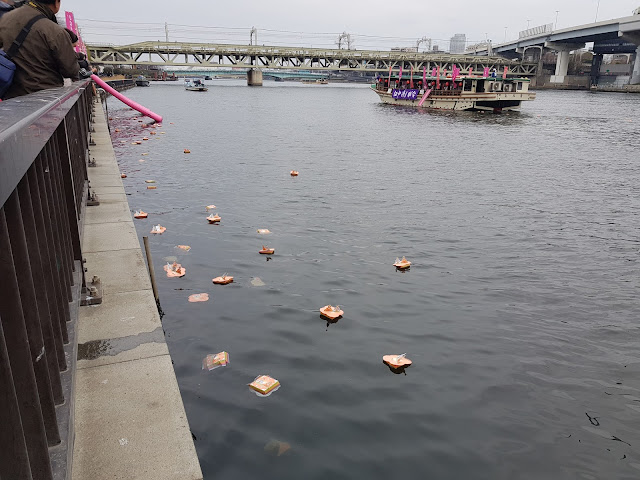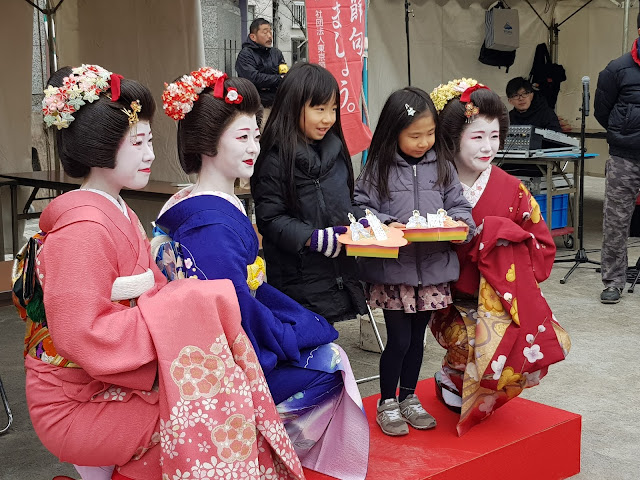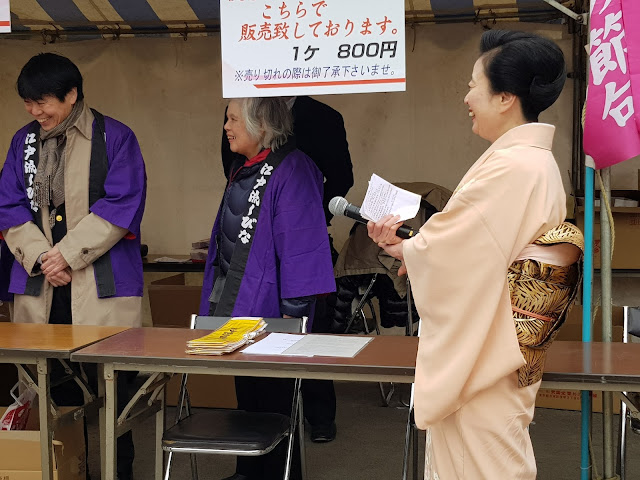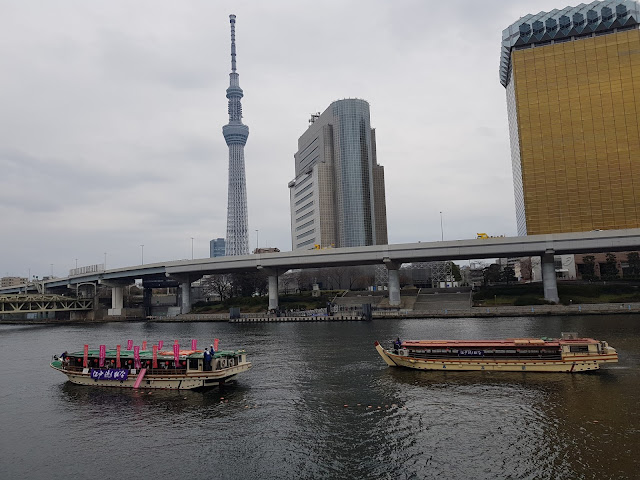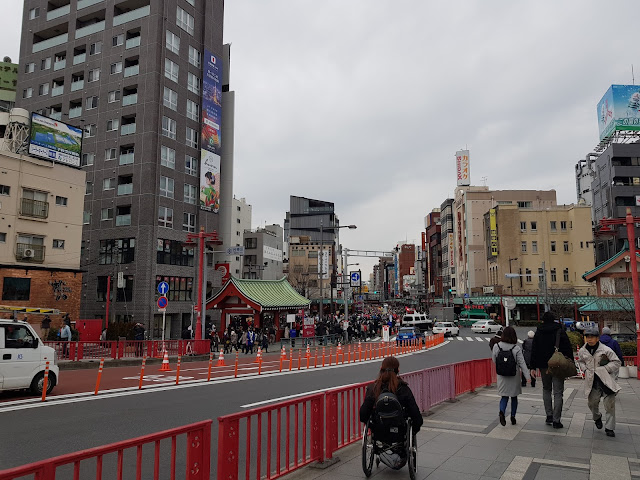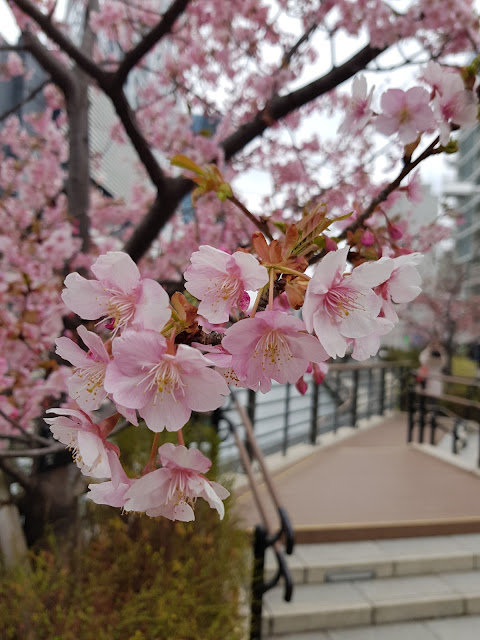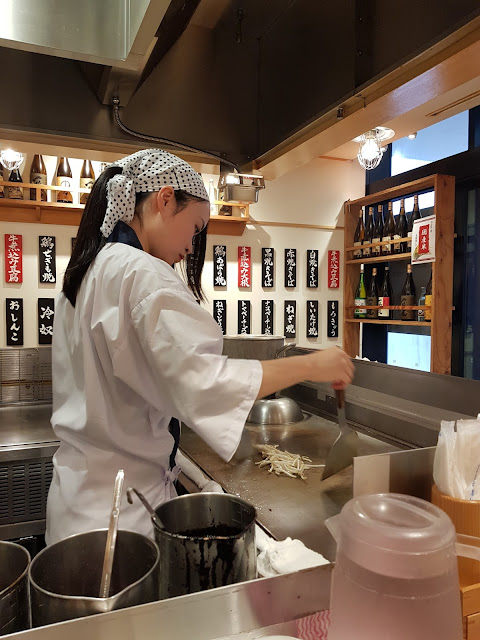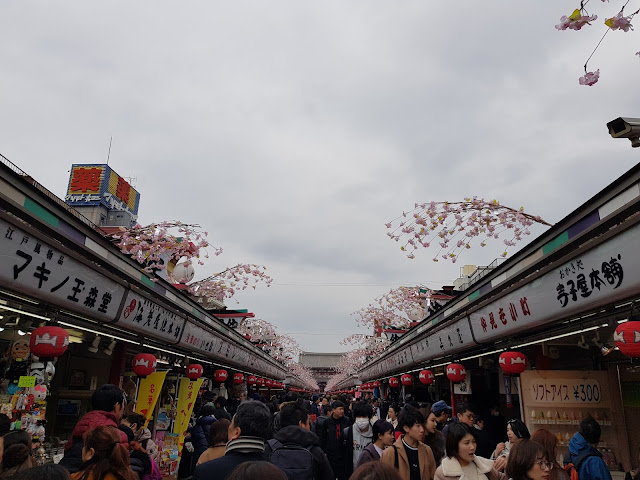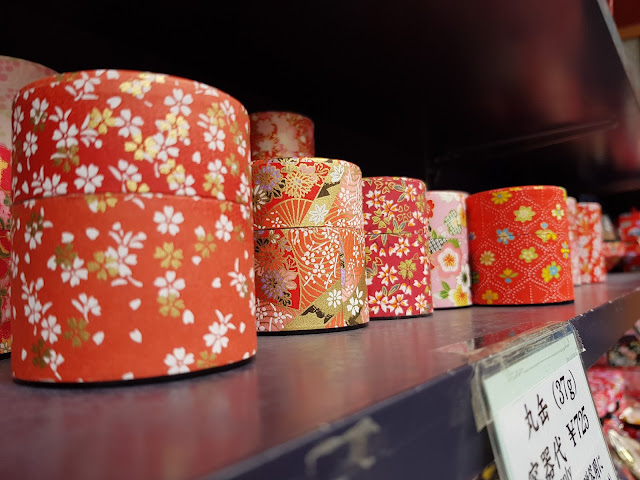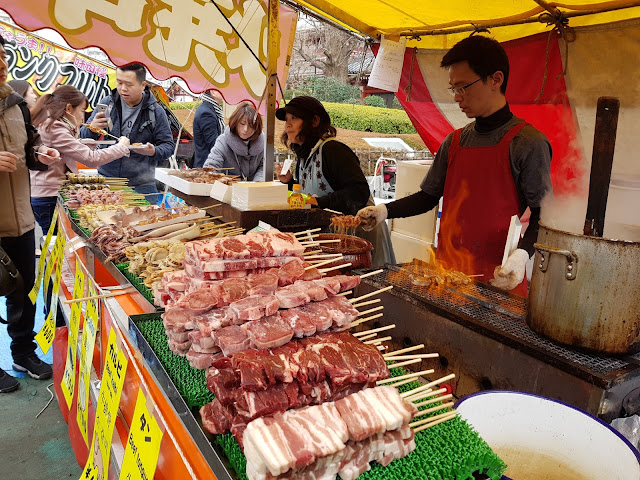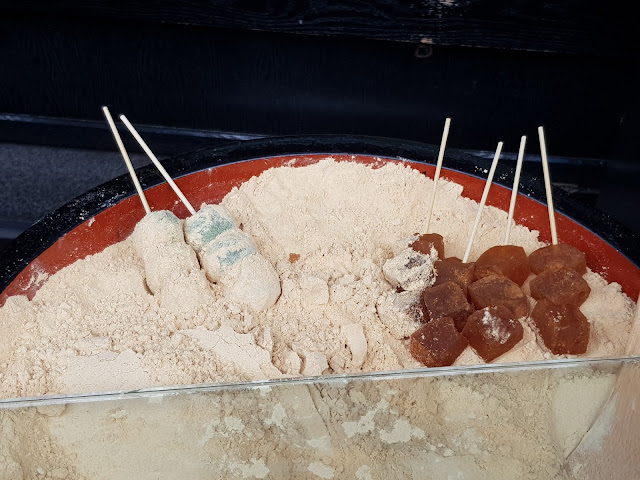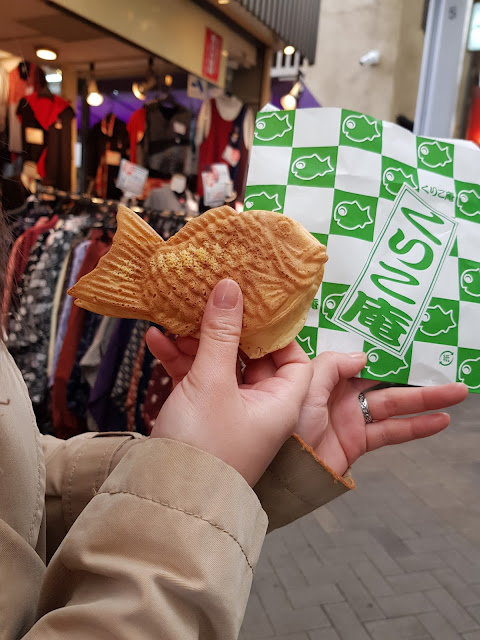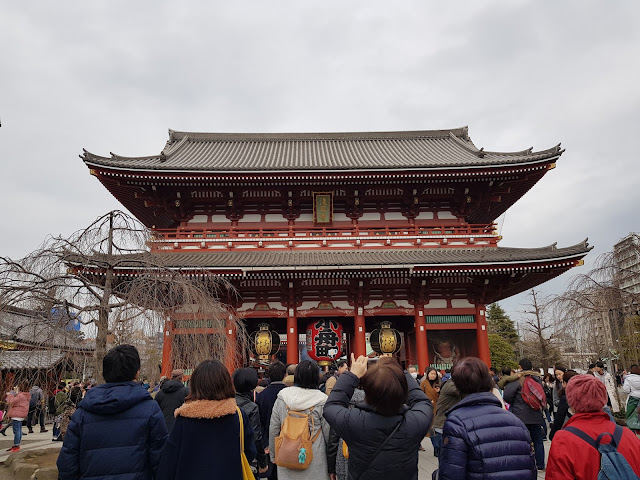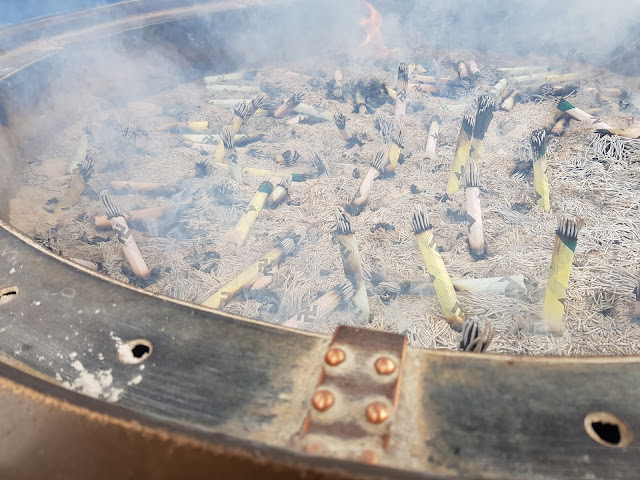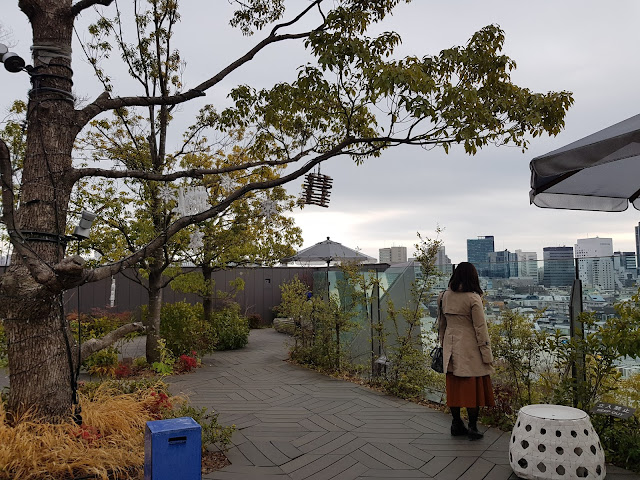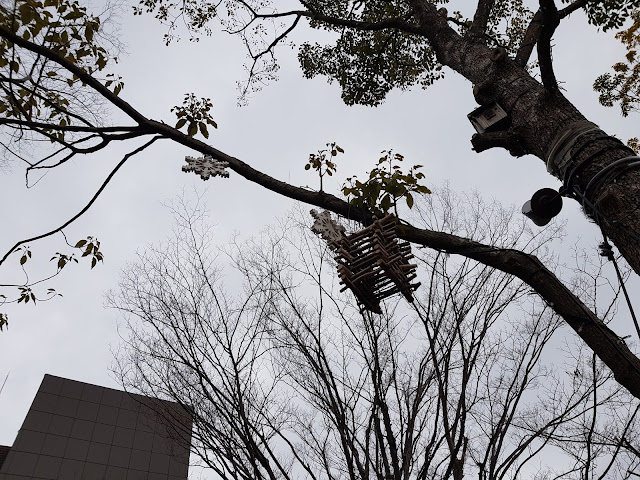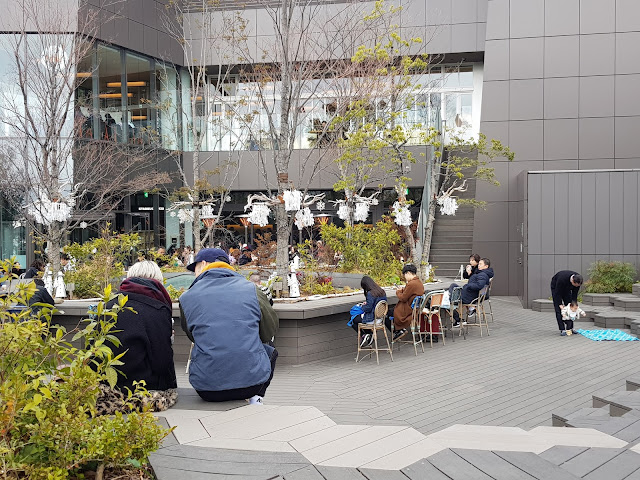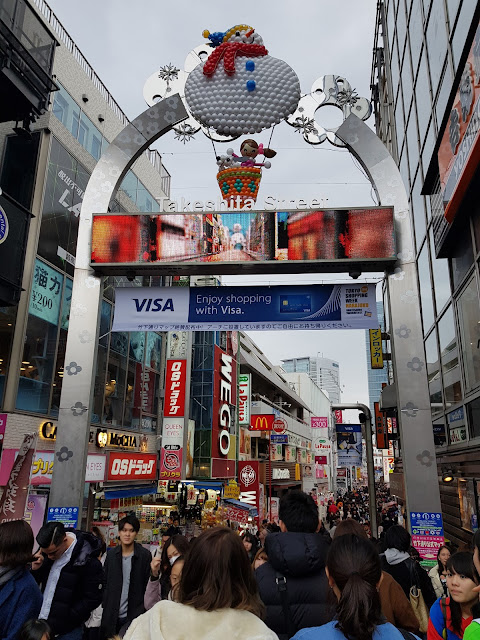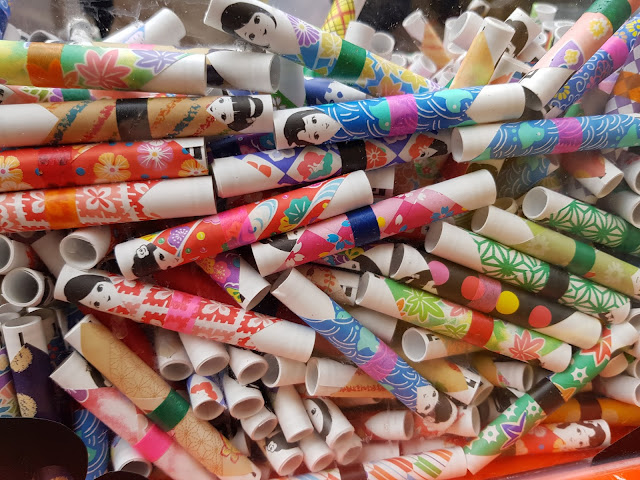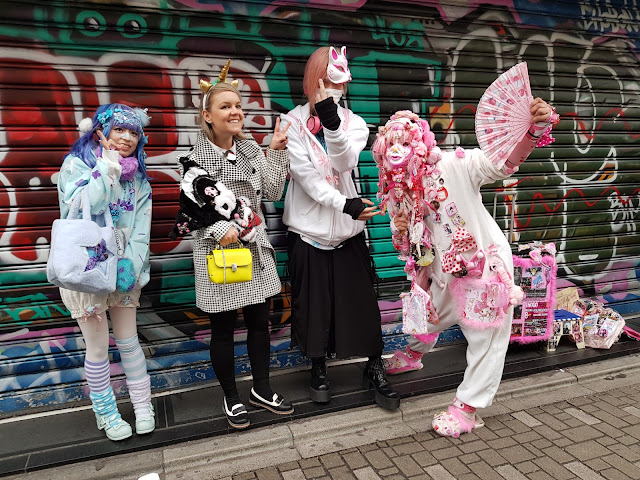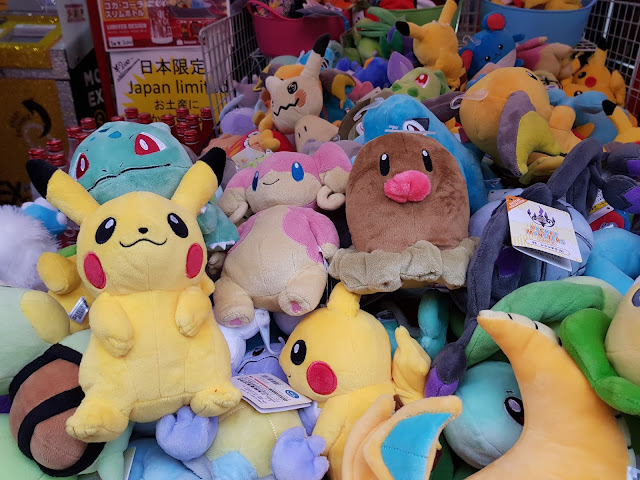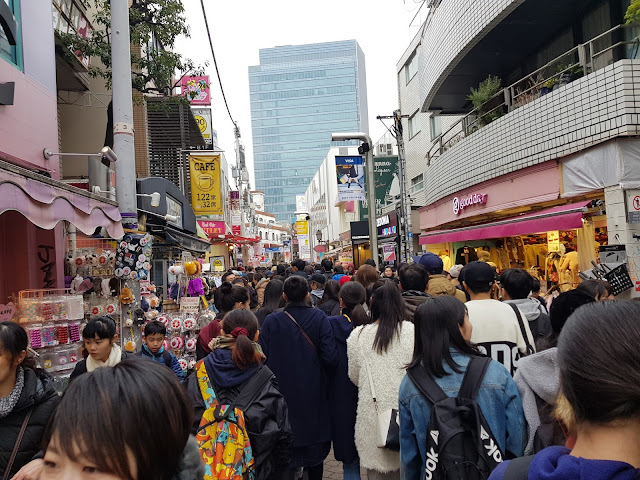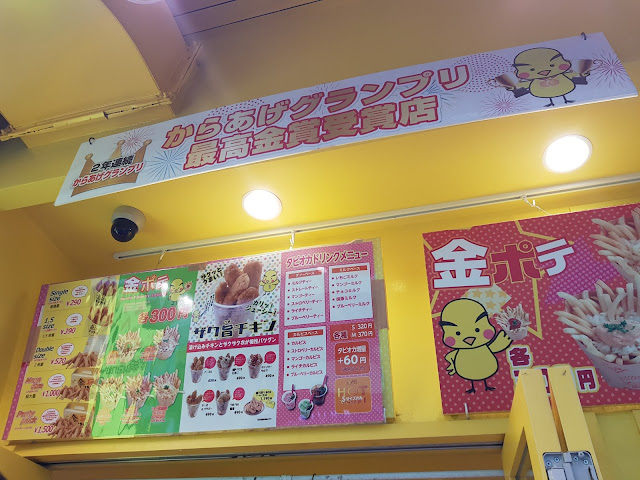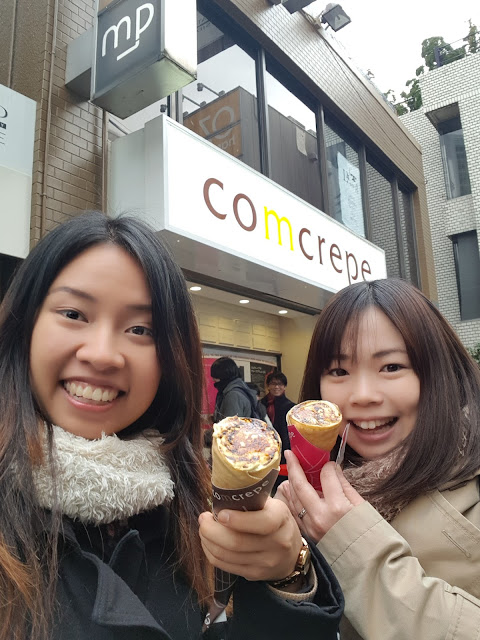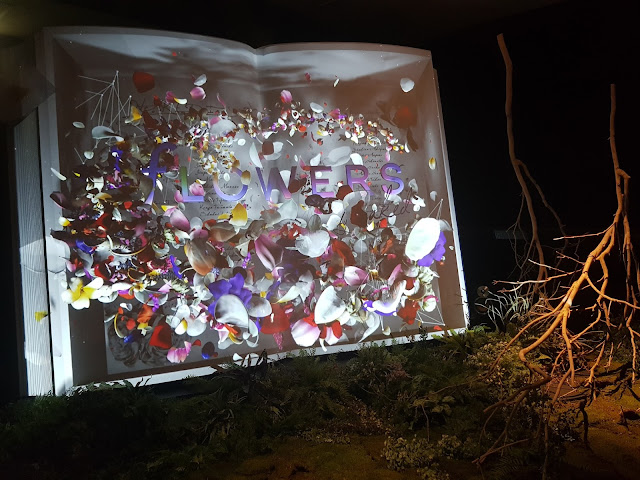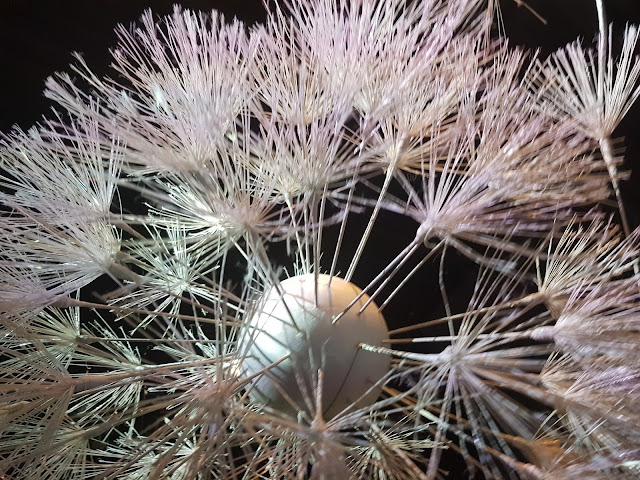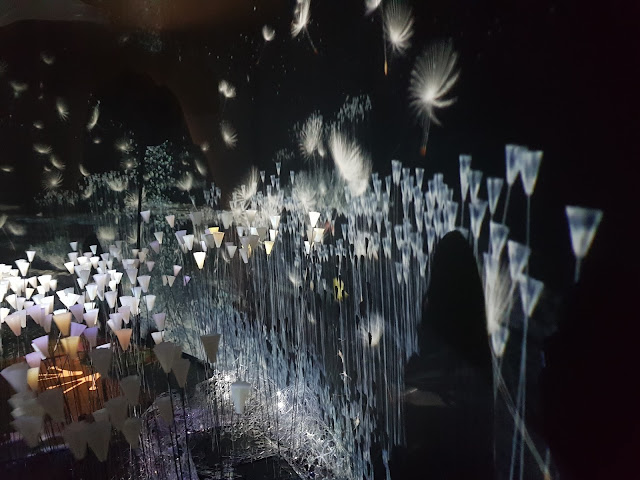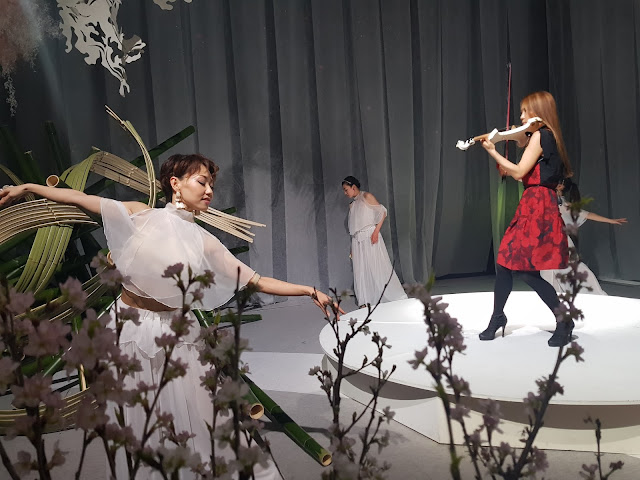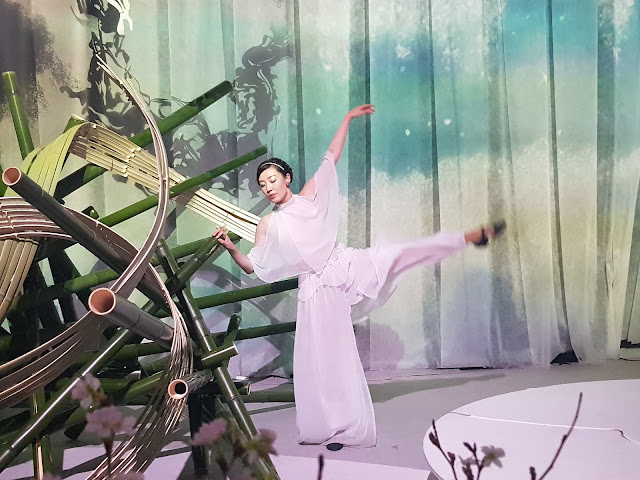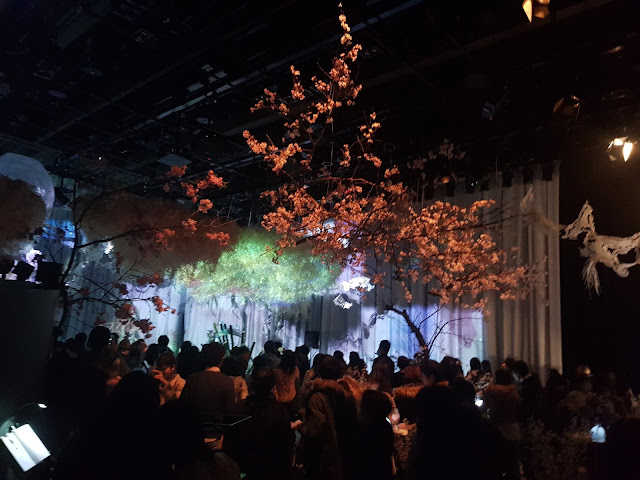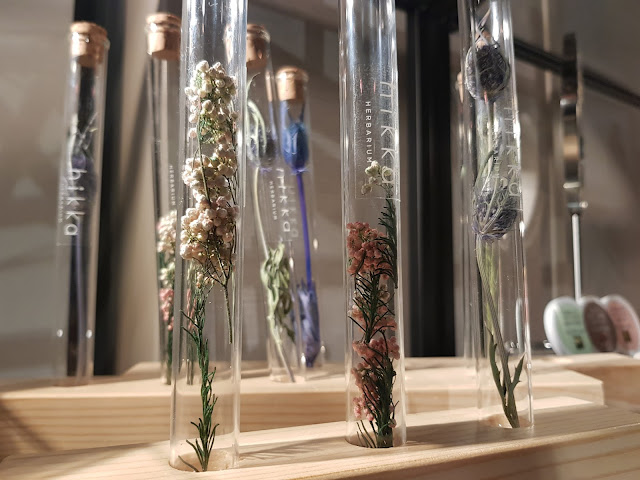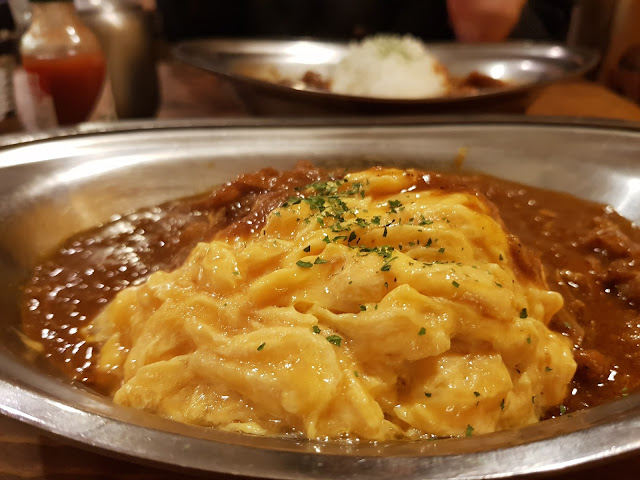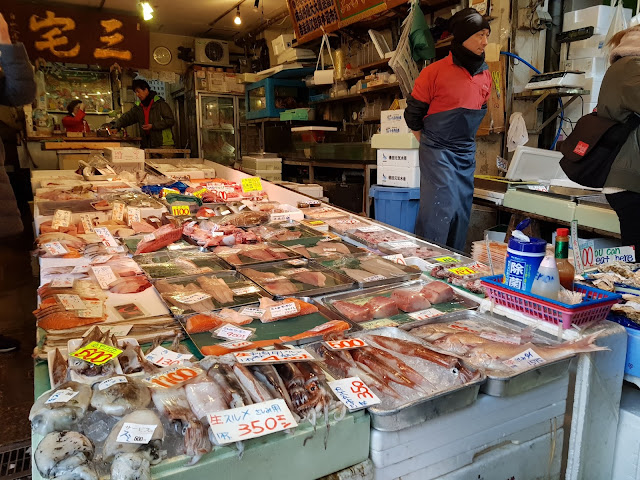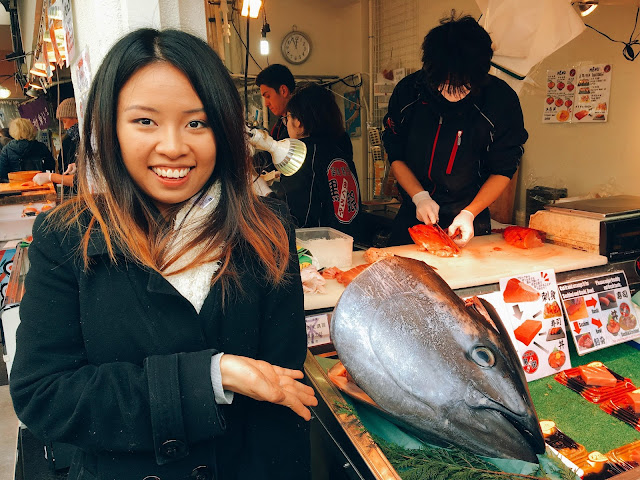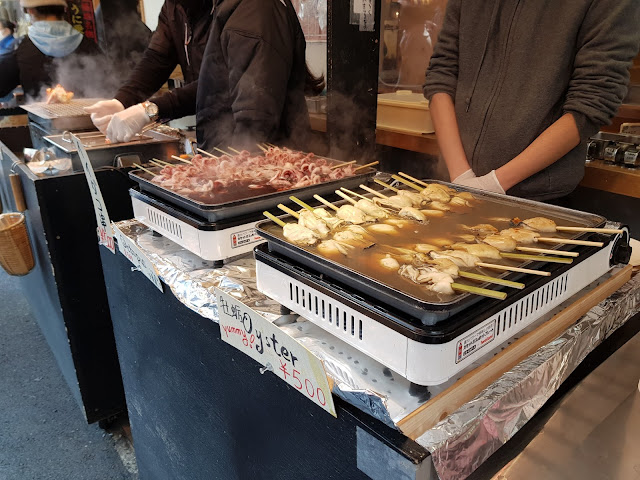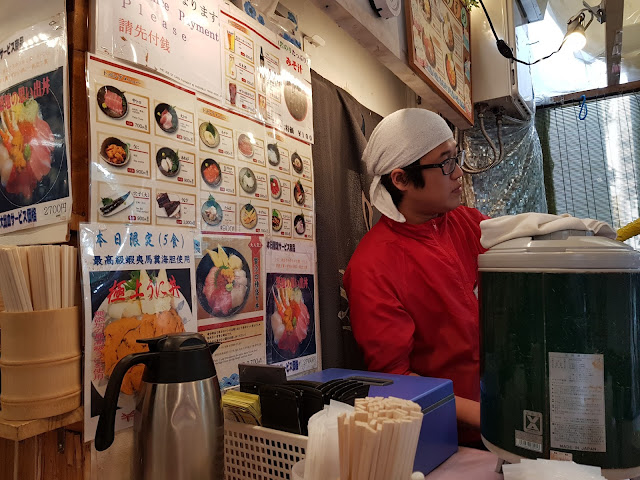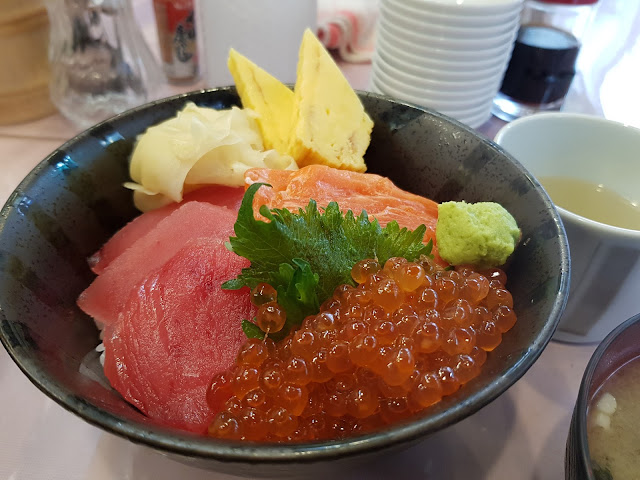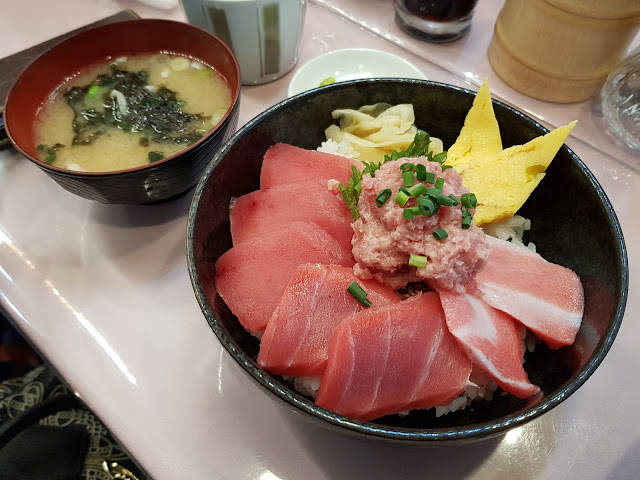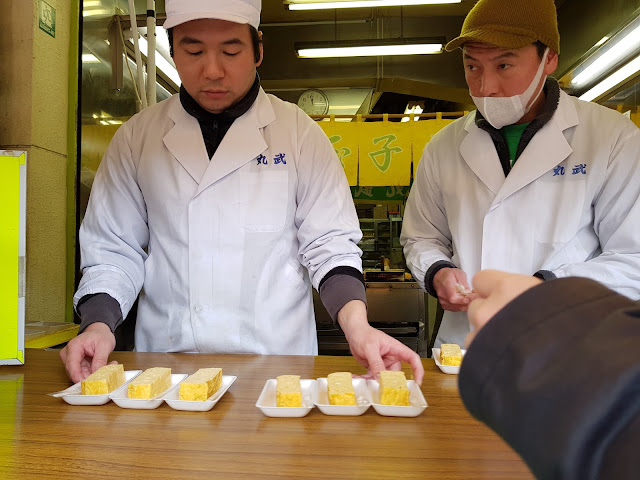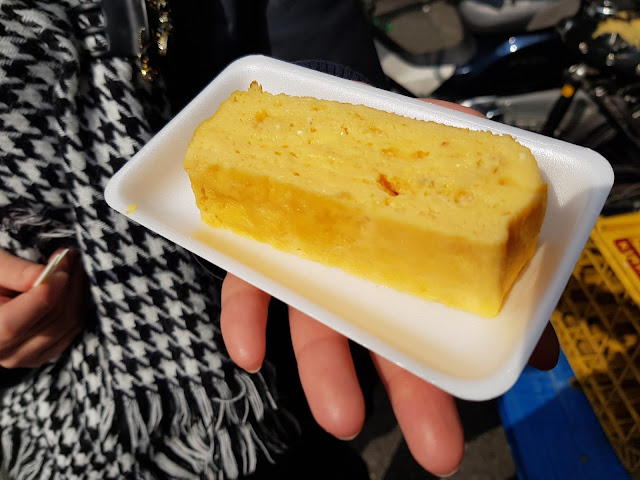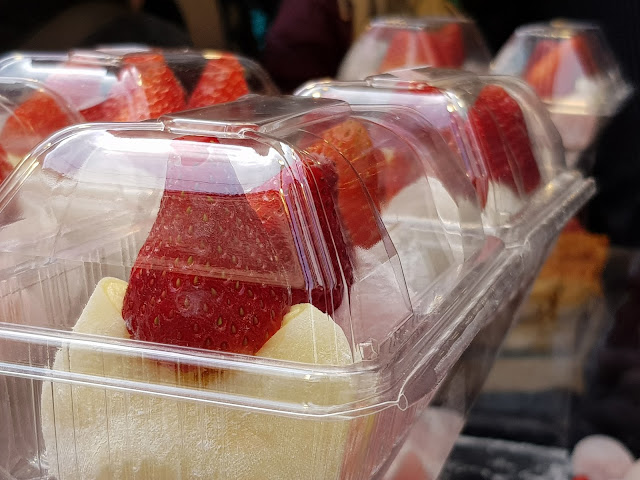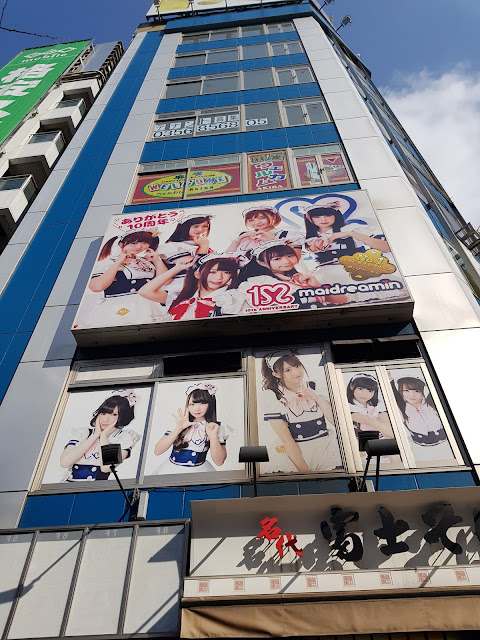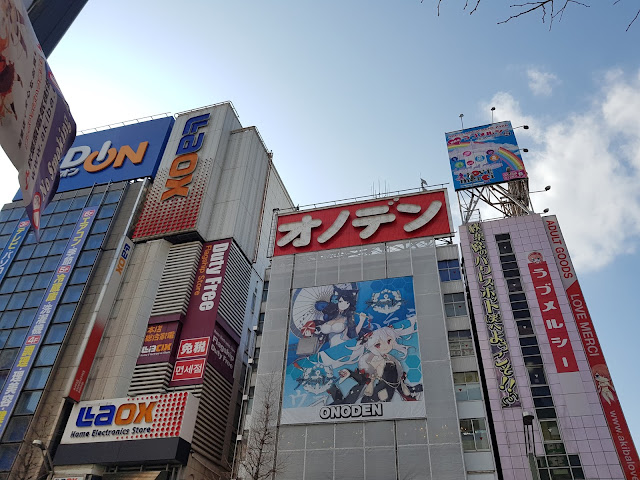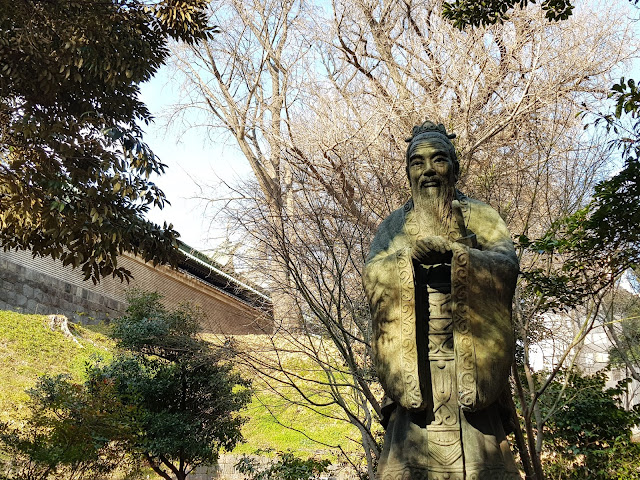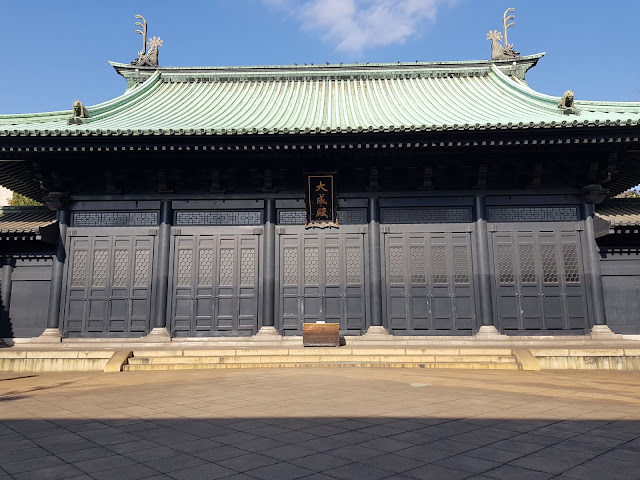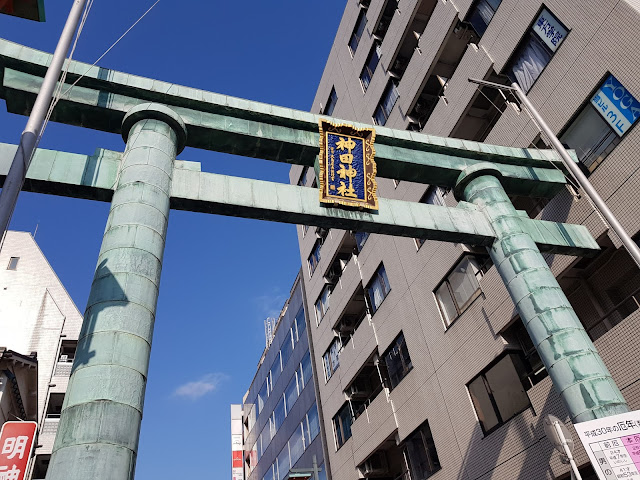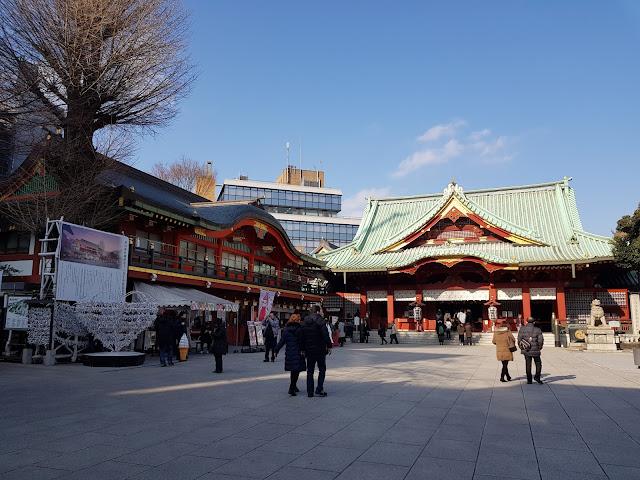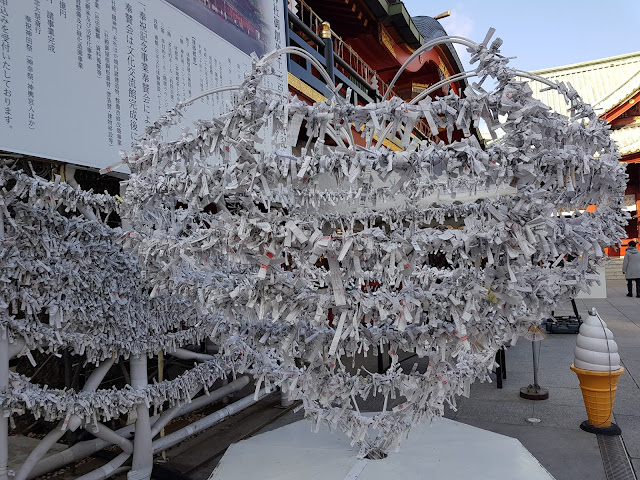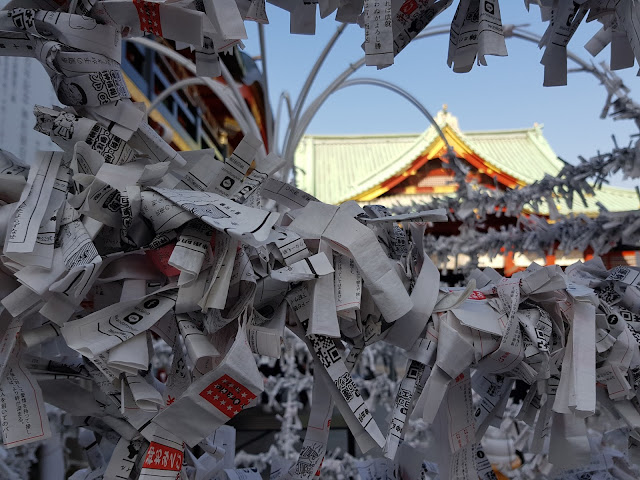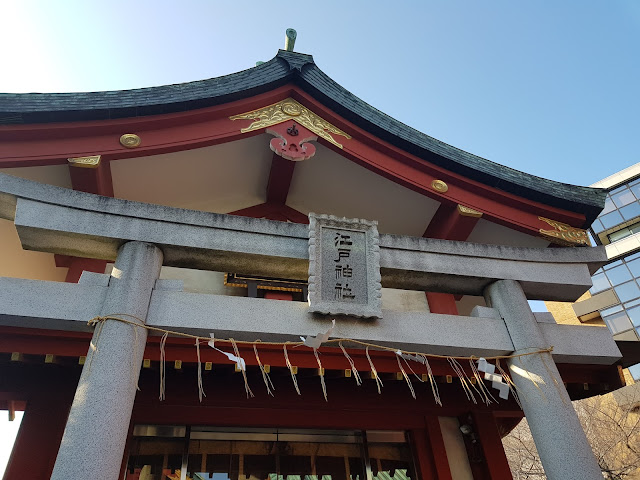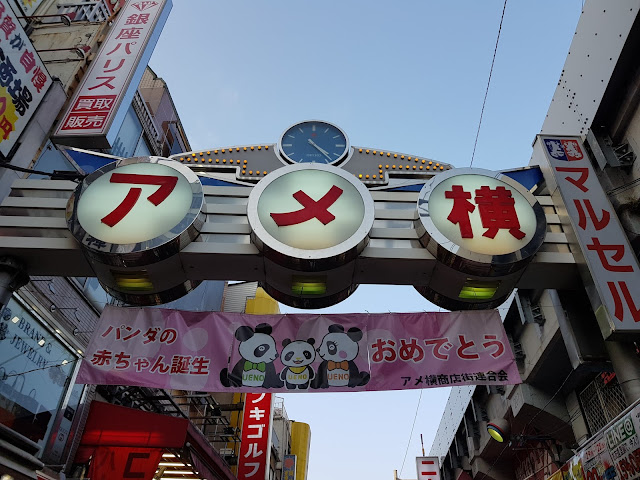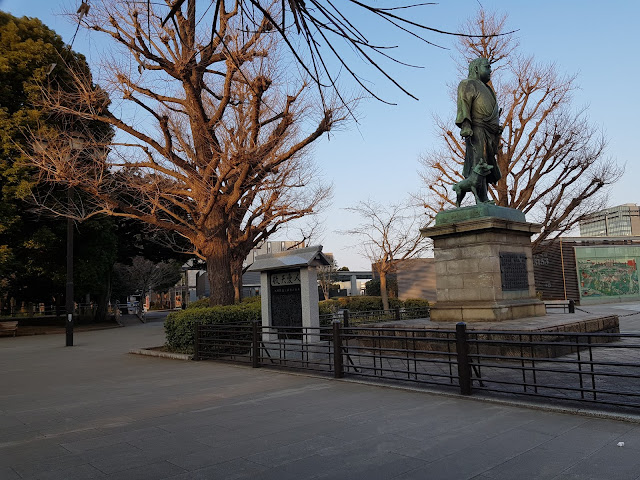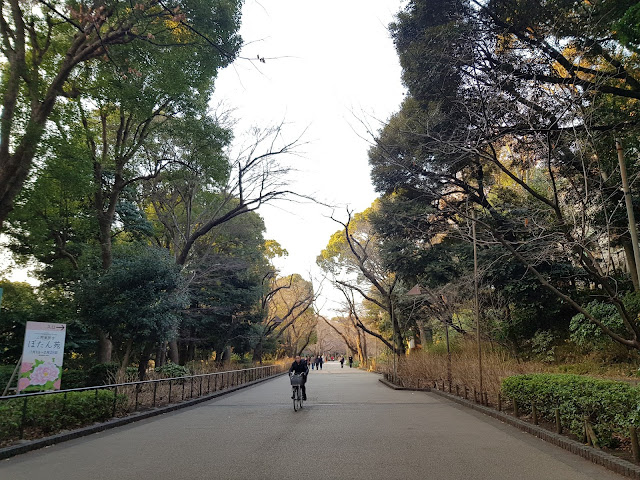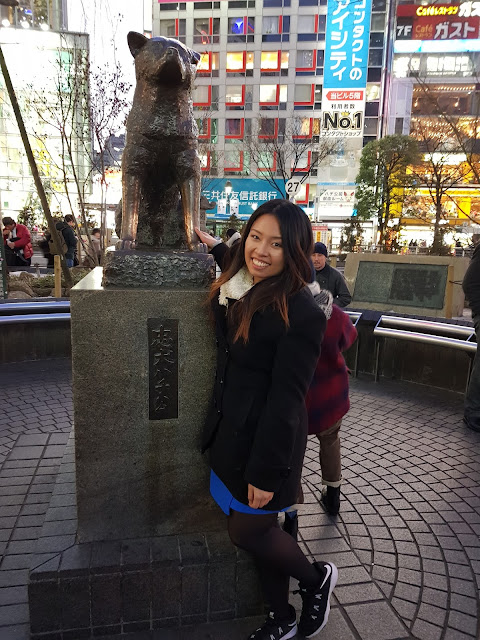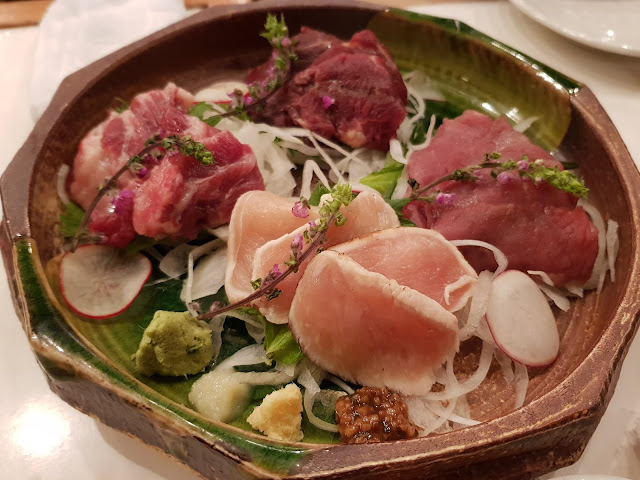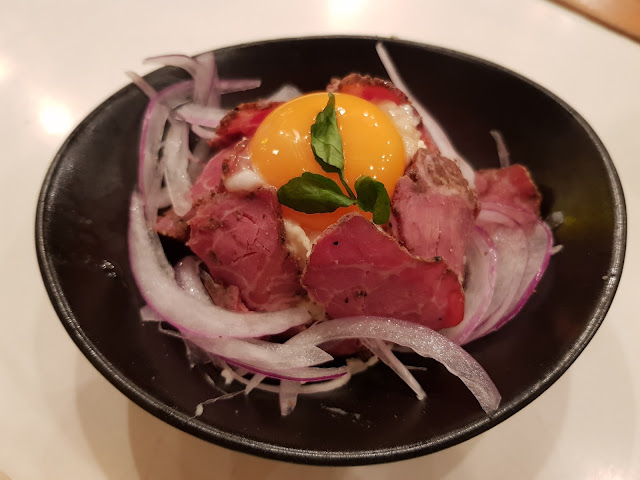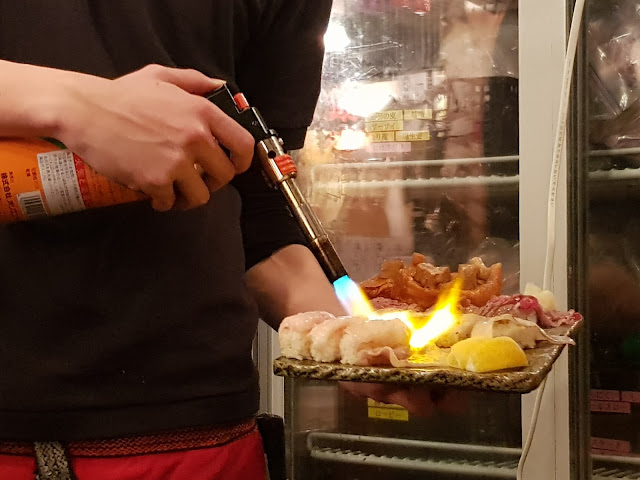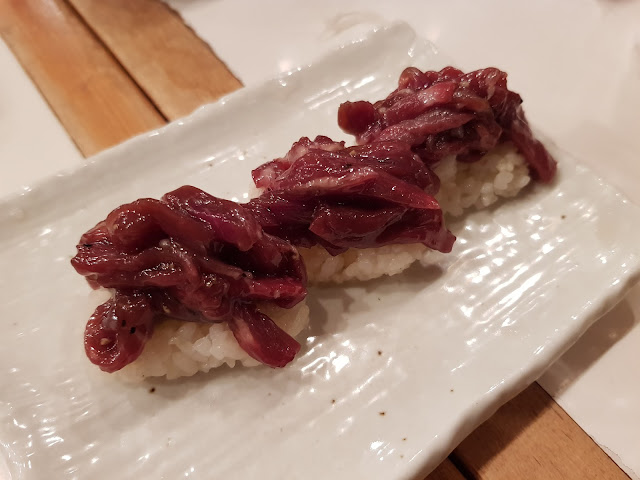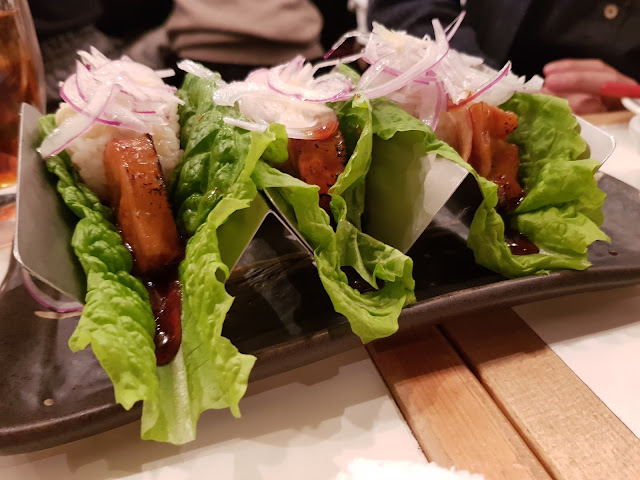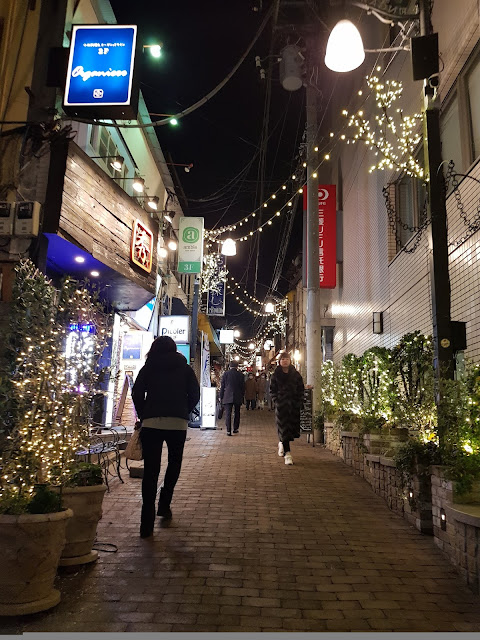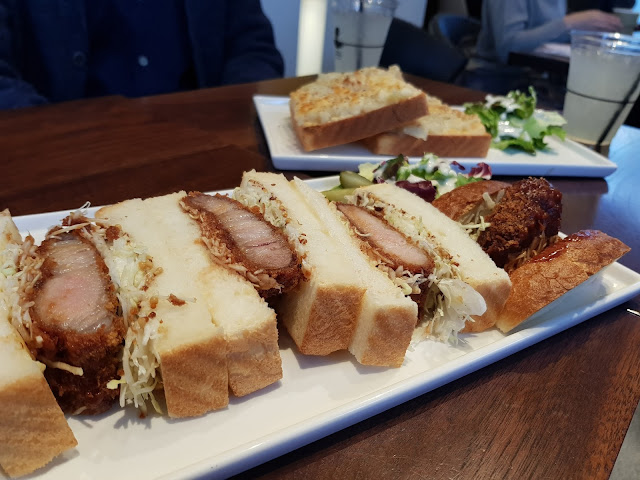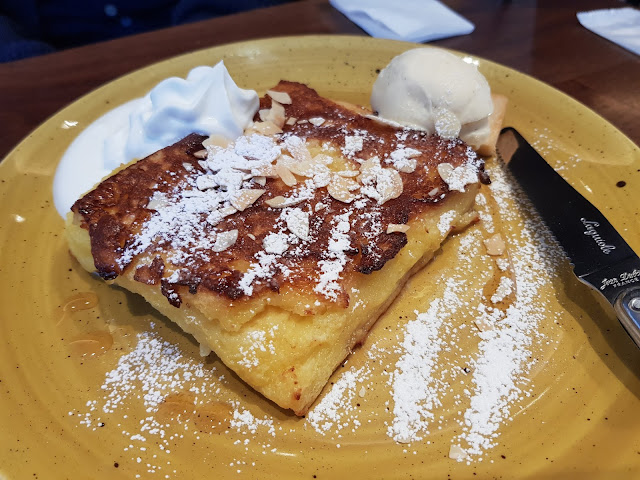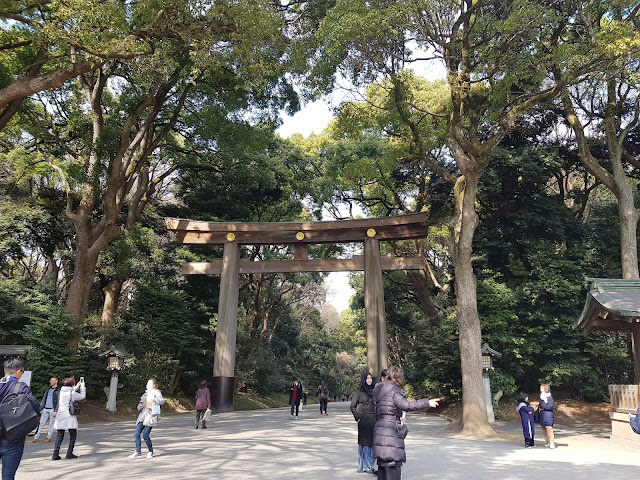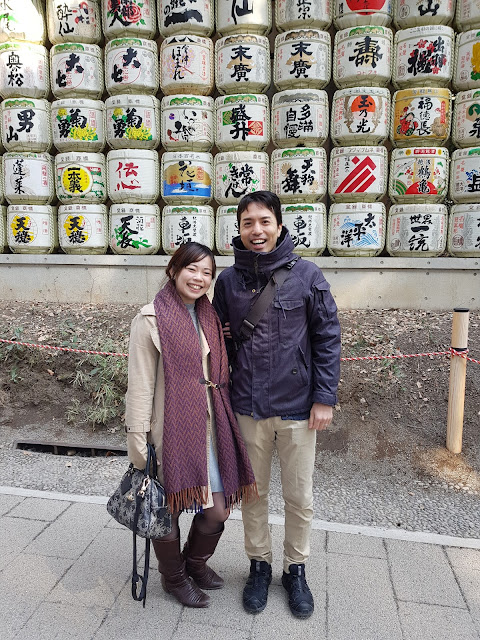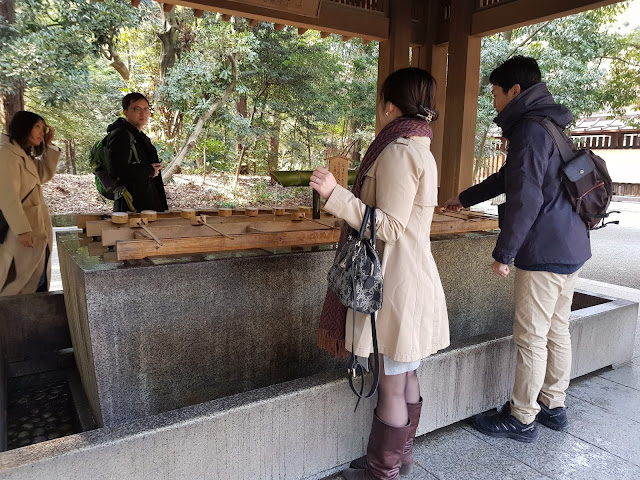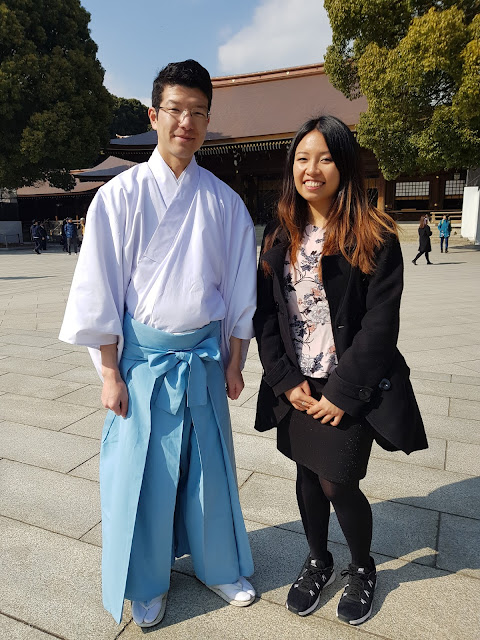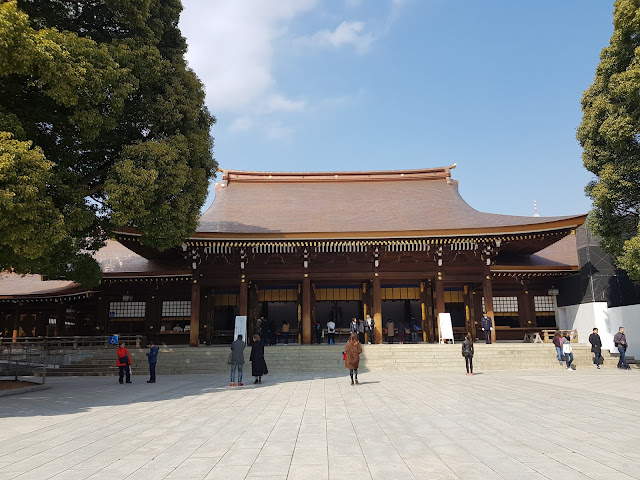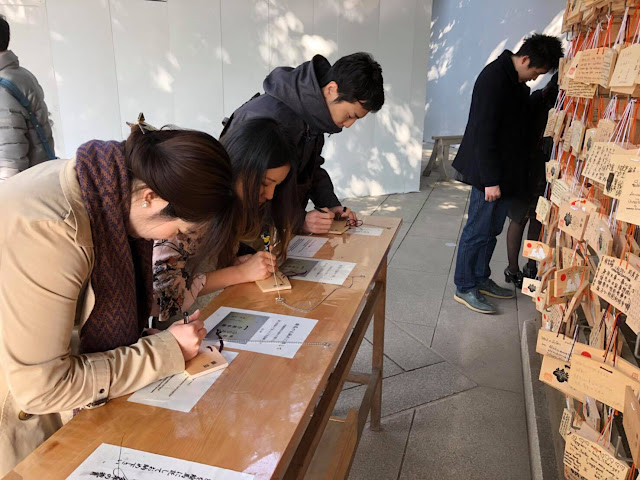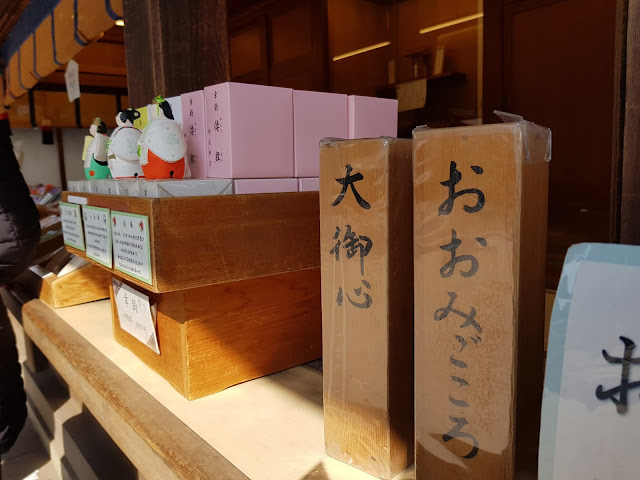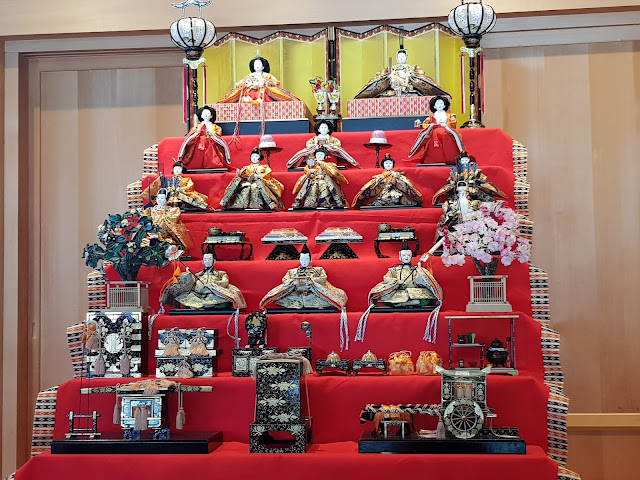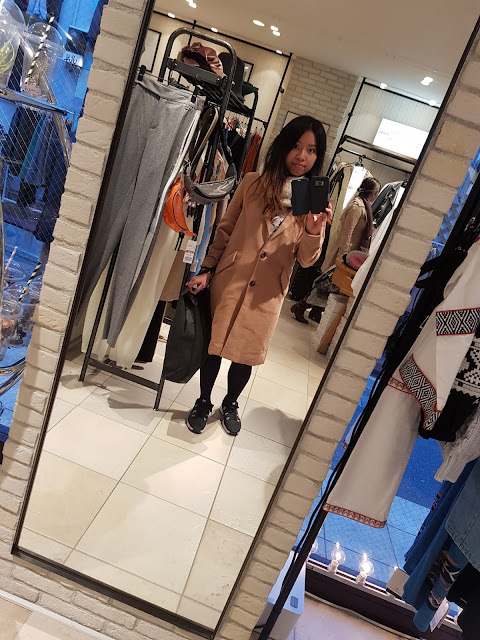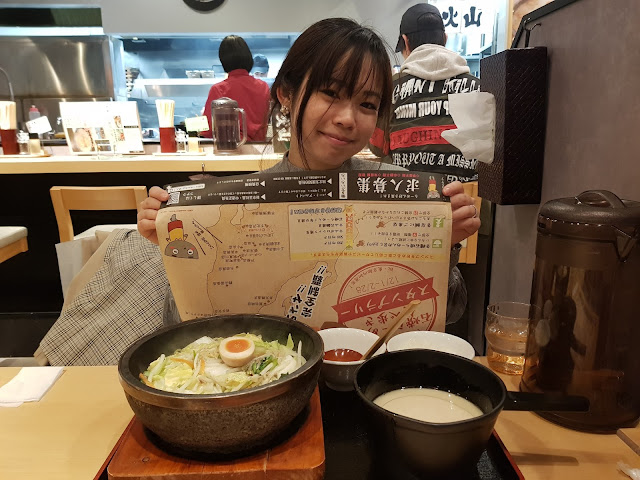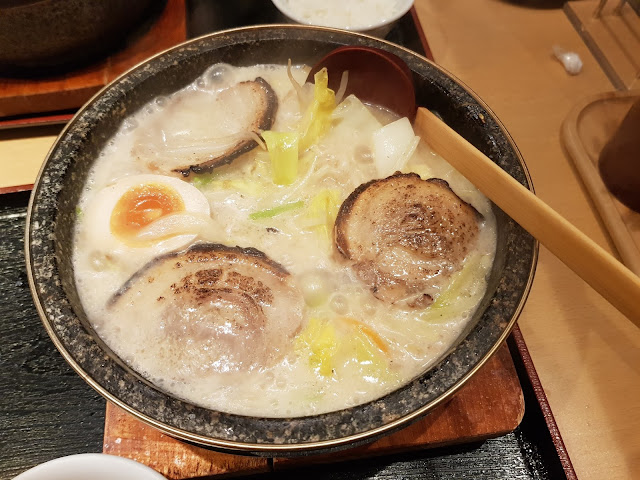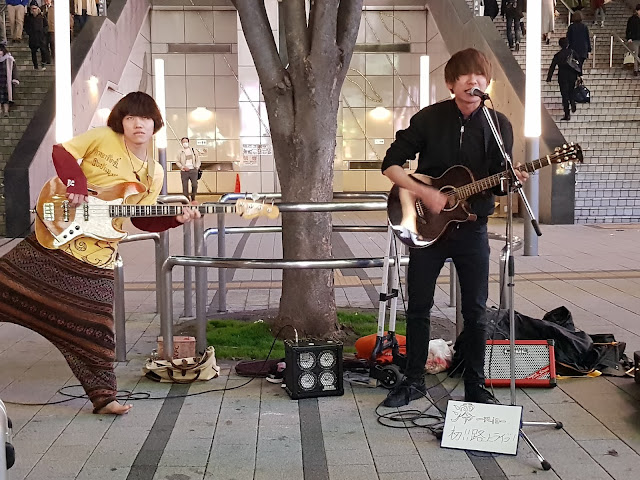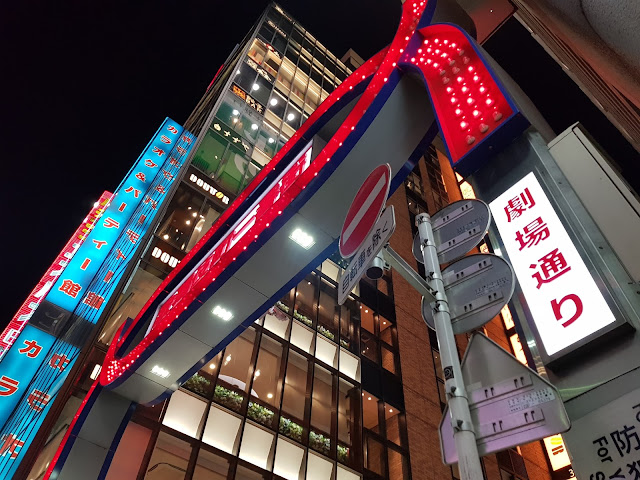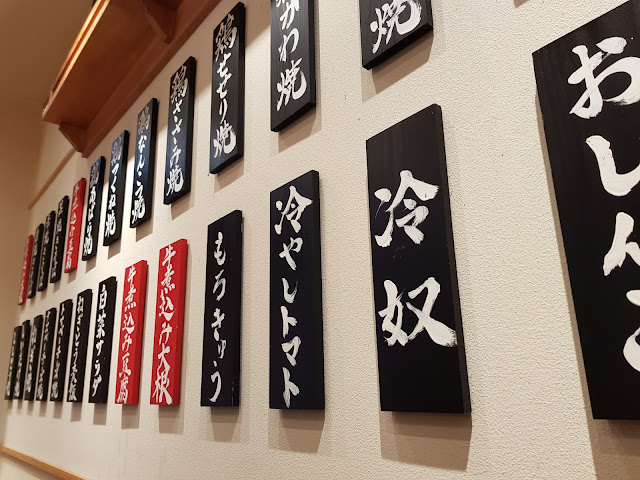Solo travel. A desire to discover a new destination while discovering more of me. I remember the first time I boarded a plane by myself which was not heading to Malaysia. At 18, I boarded a plane to London from Shannon and had roughly 24 hours to explore the city. It was one of the most memorable experiences and I knew solo travel was something I wanted to continue doing.
This time, I planned to go to a country which I have always dreamt off since I was in primary school – Japan. Despite growing up in Malaysia which is much closer to Japan than Ireland is, it was too costly for me to travel there when I was younger. The Malaysian currency was too weak and it was not a feasible destination for me. But now, since I started working last year, I knew I could put it down as one of my new year resolutions for 2018. So, I booked the tickets!
My adventure just started off in Tokyo, where I met up with one of my friends from college – Yukiko. She kindly offered her place for me to stay for four days before I head to Kyoto for three. Then, I will stop by Seoul for another four days before heading back to Dublin – because you know how much I love travelling to Korea. Third time going and not my last.
How much were the plane tickets?
Travelling from Dublin, all my three flights cost €700 flying with Air France for the two long-haul flights and Peach Airlines between Japan and Korea which was a pretty good deal.
A couple of practical tips for Tokyo / Japan
1. Buy internet for your trip
Whether it be a portable wifi device or a sim card, it is necessary. Free Wi-Fi is hard to find! I got a 4G sim which had 3GB over 8 days which cost around €16 from KLook. This was absolutely worth it as it gave me the liberty to wander around to anywhere spontaneously and find out how to get to other places with Google Searches on the spot.
2. Cash is king
I assumed that Tokyo would be very card-friendly – I was wrong. Many shops do not have card facilities and most locals do not seem to use them. Also, there is a ¥216 ATM withdrawal fee for each transaction using a foreign card. However, I managed to use my Revolut card (which holds the Japanese currency) in several shops too which allowed for free point of sale transactions.
3. Get the “Go Tokyo Pass”
It is available at most train/airport information centres which allows unlimited travel on subways and metros for ¥1500 over 72 hours. There are cheaper packages for shorter hours. Be aware that this does not include any other lines outside of those two (Tokyo’s subway/rail/metro systems are fragmented and owned by different companies). But I found this to have the best value for money for a short trip. If you’re staying longer, just get the Suica card.
4. Learn some Japanese
Basic words and phrases will help you interact with others and make the journey more enjoyable. Japanese people are also friendly and welcoming of you trying your best to speak the local language.
5. Embrace the crowd culture
It is crowded everywhere. Don’t let that bug you down, it’s just always going to be that way. Ignore that and you’ll become a professional at swimming through people.
So what did I do?
Tokyo Day 1
1. Asakusa
- Hinamatsuri Festival
- Tokyo Marathon
- Nakamise Shopping Street
- Sensoji Temple
First up, we headed to Asakusa as there was a special event by Sumida Park by the river. Local parents and children were queuing up with traditional paper dolls of the emperor and empress from the Heian period.
They then made their best wishes for their daughter’s well-being as they placed them into the river and watched them float away. This is all done in line with the Hinamatsuri festival, the Doll’s Festival or Girls’ Festival.
You also had the choice of boarding the boat to slide your paper dolls in the middle of the river.
Simultaneously, another special event was happening across Asakusa and Tokyo –
The Tokyo Marathon.
People were running through the streets while being cheered on by crowds on the sidelines.
And luckily enough, I managed to find a cherry blossom sakura tree in bloom. I had zero expectations of getting to see them as they are not due for another week or two, but one brave tree decided to blossom!
And of course the cold made us hungry so we popped into a little noodle store and got some..
Delicious tonkotsu tsukemen dipping noodles. Mmm.
The must-see stop in Asakusa is the Kaminarimon Sensoji Gate leading to the famous Sensoji Temple.
More importantly, there are rows and rows of shops along Nakamise Shopping Street leading to the temple selling delicious treats, little knick-knacks, or beautiful souvenirs to bring home.
You then finally arrive to the Sensoji Temple where people are congregating to offer their prayers.
Of course, you can’t approach the temple without getting a whiff of some good smoke.
2. Harajuku
- Omotesando Hills
- Tokyu Plaza
- Takeshita Street
- Crepes
We took a stroll down Omotesando Hills – luxury shops before catching a free bird’s eye-view at the top of Tokyu Plaza.
There is a lovely rooftop area to relax on with a bar just in front of it. It’s a nice quiet place to escape the hustle and bustle of Harajuku.
Then once you are fully charged, bulldoze through the extremely crowded Takeshita Street where shops and colours are in abundance.
As I said before,
Embrace the crowd culture.
Food vendors seem to branch off Takeshita Street where it may be a tad quieter, and you can get your hands on some scrumptious food such as this chicken karaage.
That comes with a multitude of sauces for you to choose from
And of course, end your Harajuku experience with the sweetness and creaminess that crepes can offer. We got the creme brulee flavour at Comcrepe, which had a queue of people wrapping all around its building. We waited for 15 minutes but you could definitely be waiting for longer.
My opinion? Slightly overrated. The crispy bit at the top was delicious, but every other part of the crepe was cold – they probably mass-produced it in anticipation of the queue.
Perhaps try another creperie!
3. Flowers by Naked
Yukiko suggested for us to attend this exhibition called Flowers by Naked which was held in the Nihombashi Mitsui Hall.
As the name suggested, the entire exhibition was centred around flowers which involved interactive art complete with live performances to bring the experience to life.
Flower-inspired drinks were also available like sakura spritzers and green tea flower lattes.
To finish the day, some yummy omu-rice with beef curry was comforting to the soul.
Tokyo Day 2
4. Tsukiji Fish Market
- Fresh Raw Seafood (Sashimi)
- Egg rolls (Tamagoyaki)
- Strawberry with Rice Cake (Ichigo Daifuku)
First thing in the morning, we headed to Tsukiji Market to enjoy some fresh fish in the morning. I decided against going to the fish auction in the morning as you had to be present at 3:30AM to attempt in getting a ticket before the auction actually takes place at 5:30AM.
So instead we walked around surveying the food that was on offer.
We stumbled into this little sashimi stall within the market and got ourselves some yummy breakfast.
Ranging from ¥1500 – 4000 you could get a big bowl of fresh tuna, salmon, fish eggs, minced tuna, prawn, sea urchin, crab, and more.
They also give you a nice hot bowl of miso soup and brown rice tea to wash it all down.
Then came probably one of the most tasty treats throughout my time in Tokyo.
The humble yet mighty egg roll – tamagoyaki.
At only ¥100 (75 cents) each, the fluffy and moist texture of the sweet yet savoury egg was to die for.
And if all that food stuffed you up, don’t worry, you can get some strawberry and rice cakes to go! ichigo daifuku.
5. Free Walking Tour
- Akihabara
- Yushima Seido
- Kanda Myojin, Shinto Shrine
- Ameyoko Shopping Street
- Ueno Park
If you are up for a three-hour walk and summary of Tokyo’s history and culture, sign up for the free walking tour! It begins at Akihabara which is renowned for its electronics, maid cafes, anime and manga merchandise.
Only a short stroll away, is the contrasting Yushima Seido, a temple dedicated to Confucius
Immediately beside it is the gateway to Kanda Myojin, a Shinto Shrine. We were taught to bow each time before stepping through the gate, symbolising the entry of a holy place.
People could buy wooden plaques to write their wishes for themselves or others.
There was the opportunity of buying a fortune for ¥100 where you could get one out of six different levels of luck. If you unfortunately got the most unlucky level, you could dispose of it at the temple and not bring it home with you. Then try again to see if you will be luckier the next time.
Then a quick stroll through Ameyoko Shopping Street showed their attempts of counterfeit Nikes and Pumas.
We then ended at Ueno Park and got to see a brief sight of the cherry blossoms.
Or the lack of really. If only we were two weeks later, these would have all been in full bloom.
6. Shibuya
- Hachiko
- Shibuya Road Crossing
- Meat Alley (Niku Yokocho)
I then got a glimpse of Hachiko!
My doggy’s namesake. Just so you know, my mum decided to name our dog after this famous one. So it was only customary to take a photo with his forefather.
We then crossed the street through the famous Shibuya Road Crossing. I didn’t bother to take a photo of it just in case I smashed into someone coming from another direction.
But more importantly, Yukiko and Tetsu (her husband), treated me to the most beautiful dinner you can imagine at the Meat Alley (Niku Yokocho).
Slices of meat sashimi of duck, pork, beef, and horse.
Some had delicious runny yolks on a bed of mashed potatoes.
Or flamed right before it melted in our mouths.
Some slices of meat were so tender it almost made me cry.
And of course, we need some greenery in our life to wash it down.
Then it was time to head home for some shut eye in Nakano.
Tokyo Day 3
7. Ebisu
The best way to start the day is always with breakfast.
Another part of the Japanese food scene is lots of bread – white bread, with a Japanese twist.
The bread is fluffier and the sandwiches are filled with different ingredients like a juicy pork cutlet.
To end it all, we downed a spongey eggy slice of french toast, ice cream, and whipped cream.
8. Meijijingu
We headed to Meiji-jingu, also known as the Shinto shrine that was built to commemorate the late Emperor Meiji and the Empress Shoken. Emperor Meiji was responsible for leading Japan into the modern era. The previously traditional and insular Japan was brought to engage with other nations.
Walking up to the Main Shrine, were big vessels which held sake and right opposite it was barrels of French wine similar stacked – highlighting the new Japan engaging with the outside world.
Before entering the shrine, there were steps required to prepare one’s self. Firstly, scoop the water with the ladle and wash your hands starting with the left. Then rinse your mouth with some water from one of the hands and pour the remaining water down its handle.
Tetsu introduced me to Taisuke, one of his friends who he studied with in Dublin, who works as a full-time Shinto priest. Taisuke shared with me all about his journey of becoming a priest as well as what his duties entail currently and moving forward.
His level of English was one of a native speaker so it was so interesting to really inquire about his experiences and I did not even know he gave talks during his time in Dublin at Trinity, UCD, and other Ted Talks.
Did you know that a Shinto priest must graduate from a four year university degree which is only available in two universities in Japan? They then have to apply for a job through CVs and interviews just like any other.
Once you become a priest, there are six different levels of seniority within the priesthood to be earneed through time. Your level is then represented by the colour of your hakama (pants).
Starting off with white cotton, it is followed by sky blue, purple, black, silver, and white silk.
Taisuke kindly brought three wooden plaques for us so we could write our wishes and hang it up on the wall. Fun fact: they have a burning ceremony to clear the wooden plaques once they fill up too much.
Taisuke then led us to have a chance to pull a fortune stick out from the box (omikuji). However, instead of being told of the level of luck received, each person received a waka poem written by Emperor Meiji or Empress Shoken as they wrote more than 100,000 of them. The best part was, they had English translations for me!
” The things that people say,
Whether good or ill,
Surely can all profit us
If we but listen well.”
“Hitogato no yokima
Ashikimo kokoroshite
Kikeba wagami no
Tameto koso nare”
– Empress Shoken
It was a great honour to be able to get such a personal tour from Taisuke as there was much more of an opportunity to truly engage with the culture in front of me.
9. Shimo-Kitazawa Shopping Area
Yukiko then brought me to a wonderful quirky vintage area where the shops were filled with treasures to find if you spent time looking through them. I got myself a new coat which I absolutely needed which only cost ¥2000 – less than €20.
The shop we got it from was extremely strange as there were a list of rules you had to obey before allowed to even step into the shop. These included
1. Placing your bags and coat on the designated sofa
2. Promising to return the clothes to its original condition and area if you decided not to buy it
3. Placing the items you are ‘thinking’ about on a designated rack
4. Placing the items you intend to buy at the cashier with the tag facing the cashier.
5. Only bringing your wallet to the cashier for payment
6. Each transaction will take ten minutes to process and your name and birthday must be given to be keyed into their customer loyalty database.
Summarised – she was an intense person that made you feel you had no choice but to follow her rules.
To destress from it all, we went for hot pots of tonkotsu chashu ramen nearby at a place called “Kazan”.
They poured the soup in front of you while giving you a paper place mat to shield your face from its boiling splashes.
10. Shinjuku
- Kabukicho
- Golden Gai
We ended the night by dropping by Shinjuku where we were welcomed by local buskers called “Mio” who said they were busking for the first time. The bassist was an animated character who no joke, jumped around the place, head banging, making sudden bodily jerks while being barefoot the entire time in the cold. It definitely succeeded in drawing a crowd!
We then walked through Kabukicho, Tokyo’s red light district street. It was much shorter than expected with all the hype surrounding it. All I really saw was provocative posters of girls and promoters trying to draw people into their venues. Aside from that, you did not actually see people walking around as you would, say, the likes of Amsterdam.
We then popped our head into the concentrated Golden Gai area consisting of more than 200 Izakaya bars in six alleys and that’s how my exploration of Tokyo ended before I took off to Kyoto on the Tokaido Shinkansen (bullet train).
It was a very full three days which was filled with food including ramen, sashimi, crepes, buns, fishcakes, sushi, egg rolls, and more. I was introduced to its varied culture which ranged from Shinto shrines to red light districts, and from modern exhibitions to traditional ceremonies. I loved every single second of it and it was even further enriched with the company of both Yukiko and Tetsu who opened their newlywed home to me.
What a mind-blowing first impression of Japan.
More to come with Kyoto!

